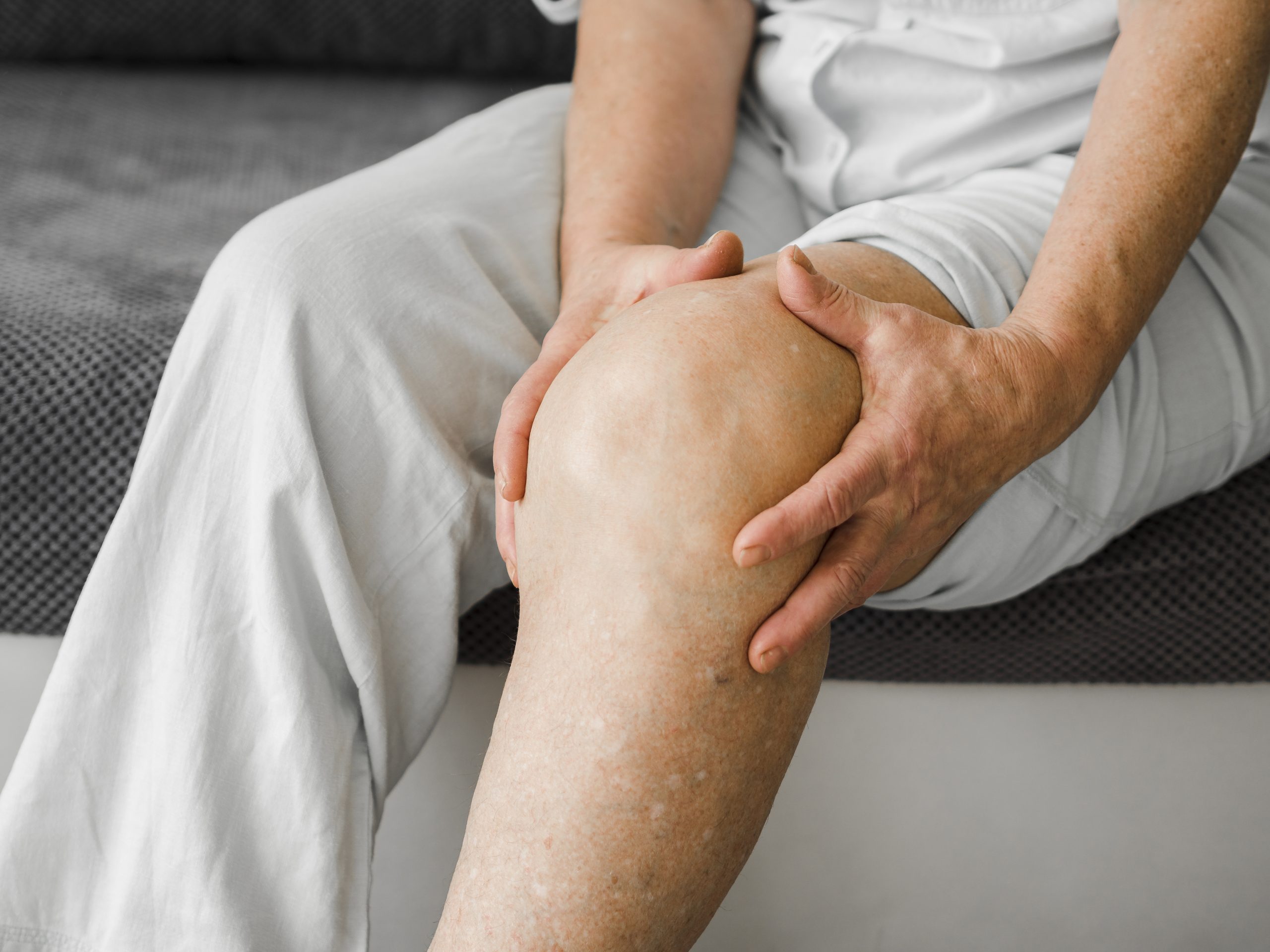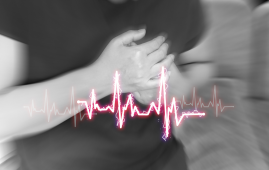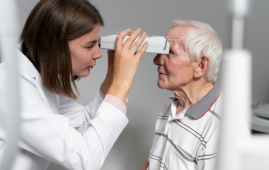

It has the potential to be a downward spiral. Leg pain is one of the most common symptoms of peripheral artery disease (PAD). When that pain interferes with how much these people walk, the chances of them developing depression symptoms increase. This is the conclusion of a study published recently in Circulation: Cardiovascular Quality and Outcomes.
The finding came as a “surprise,” according to Kim G. Smolderen, PhD, MSc, senior author of the study and associate professor of medicine (cardiovascular) and psychiatry at Yale School of Medicine. She had suspected that it was primarily depression-related symptoms that were causing less walking because previous research had shown that depression might reduce a person’s desire to exercise. However, the study discovered that this was only partially accurate, and that it was mostly the opposite way around.
Despite the fact that other factors can contribute to the onset of the disorder, “it is because they reduced their physical activity that they became significantly more at risk of depression,” Smolderen explained.
The more their legs pain from PAD, the less they want to move
Smolderen and colleagues discovered in their study that those with symptomatic Peripheral Artery Disease (PAD) may experience increased stress and despair after receiving the diagnosis. Furthermore, health questionnaires completed by patients prior to a formal diagnosis indicated the presence of early stress and depression symptoms.
This is an important insight and has clinical implications for how and when we would screen for depression potentially, but also to prevent depression from happening in the first place in this population.” – Kim G. Smolderen, PhD, MSc
According to Smolderen, co-director of the Vascular Medicine Outcomes (VAMOS) research program and co-founder of the integrated cardiovascular behavioral health program at Yale New Haven Health, if the combination of Peripheral Artery Disease, depression, and episodes of high stress persists over time, it can increase the risk of death.
“If your body is constantly in a state of stress and fight-or-flight mode,” she explained, “your systems are going to get depleted, and it also affects your cardiovascular system, [including] your autonomic tone,” which is the balance of the sympathetic and parasympathetic nerve systems. It can increase the risk of cardiovascular death if it becomes out of balance over time.
The study also discovered that having depression symptoms can increase the likelihood of hospital readmission and overall poor health in persons with Peripheral Artery Disease.
Smolderen stated that depression impacts sleep, and that “if you are more stressed or depressed, you may have a harder time following recommendations for changing” your lifestyle by exercising, lowering weight, and quitting smoking—all of which assist decrease PAD symptoms.
How to Get Rid of Stress and Depression
Even though it may be difficult to stop the pattern, persons with PAD can counteract spells of excessive stress and sadness with easy strategies.
People with PAD should start with supervised exercise or walking programs at home. “And we know that these work better if there are cognitive behavioral therapy (CBT) approaches embedded within those programs, as well as motivational interviewing,” she added. “So, if we can deliver these physical activity programs with those behavioral components, our chances of success are higher.”
CBT is a collaborative effort between the psychologist and the client to shift to more beneficial thinking and behavior patterns in order for a person to achieve their goals. Motivational interviewing, on the other hand, is a counseling technique used to encourage people to make behavioral changes by meeting them where they are in their journey.
This form of training may not only help people avoid high stress and despair, but it may also assist them in “walking through” pain rather than ceasing exercise. People with Peripheral Artery Disease can improve both their leg function and their overall cardiovascular fitness by maintaining a beneficial exercise level. As a result, their bodies may be able to build new pathways around the blood artery obstructions caused by PAD to provide blood to the muscle tissue in their legs.
According to Smolderen, in some cases, people may benefit from an angioplasty, a technique that removes the blockages that cause pain and impede walking abilities. Following that, a stent would be inserted in the damaged artery to prevent additional cholesterol buildup.
After attempting other measures, including as exercise, a healthy diet, and medication, the individual with PAD and their treating physician might discuss this therapy option. The discussion would also take into account the patient’s preferences as well as indications for limb salvage in advanced stages of PAD.
Future-oriented knowledge
This research paper contributes to a better understanding of the association between Peripheral Artery Disease and depression. “I think this was the first time where we were able to map out the directionality of what happens first,” Smolderen added.
“This is an important insight with clinical implications not only for how and when we would screen for depression in this population, but also to prevent depression from occurring in the first place.”
The study, according to Smolderen, “further confirms that we cannot look at vascular treatment needs separately from behavioral health needs” if patients are expected to adopt lifestyle changes. While the integration of mental health and cardiovascular medicine has been investigated, she claims that no existing standard of care mixes the two. Smolderen is collaborating with colleagues in cardiology and psychiatry at Yale to develop such a program.
She also hopes that the team’s findings, as well as the VAMOS program she co-directs with Carlos Mena-Hurtado, MD, interventional cardiologist and associate professor of medicine (cardiology) at Yale School of Medicine, will inspire people to invest in integrative programs and work with organizations like the American Heart Association (AHA) or the American College of Cardiology to change how the health system cares for this population.
more recommended stories
 Brain Pulsations Linked to High BMI
Brain Pulsations Linked to High BMIAccording to a new study from.
 Brain Age Estimation: EEG Advancements in Neurology
Brain Age Estimation: EEG Advancements in NeurologyTo estimate brain age using EEG.
 Unlocking Ketogenic Diet for Epilepsy Management
Unlocking Ketogenic Diet for Epilepsy ManagementExploring the Therapeutic Potential of Ketogenic.
 Senescence in Neurons: Findings
Senescence in Neurons: FindingsBased on a new study by.
 Balanced Diet Linked to Enhanced Brain Health
Balanced Diet Linked to Enhanced Brain HealthDiet and brain health are strongly.
 Acid-Reducing Drugs Linked to Higher Migraine Risk
Acid-Reducing Drugs Linked to Higher Migraine RiskIndividuals who utilize acid-reducing drugs may.
 Atrial Fibrillation in Young Adults: Increased Heart Failure and Stroke Risk
Atrial Fibrillation in Young Adults: Increased Heart Failure and Stroke RiskIn a recent study published in.
 Neurodegeneration Linked to Fibrin in Brain Injury
Neurodegeneration Linked to Fibrin in Brain InjuryThe health results for the approximately.
 DELiVR: Advancing Brain Cell Mapping with AI and VR
DELiVR: Advancing Brain Cell Mapping with AI and VRDELiVR is a novel AI-based method.
 Retinal Neurodegeneration in Parkinson’s Disease
Retinal Neurodegeneration in Parkinson’s DiseaseBy measuring the thickness of the.

Leave a Comment